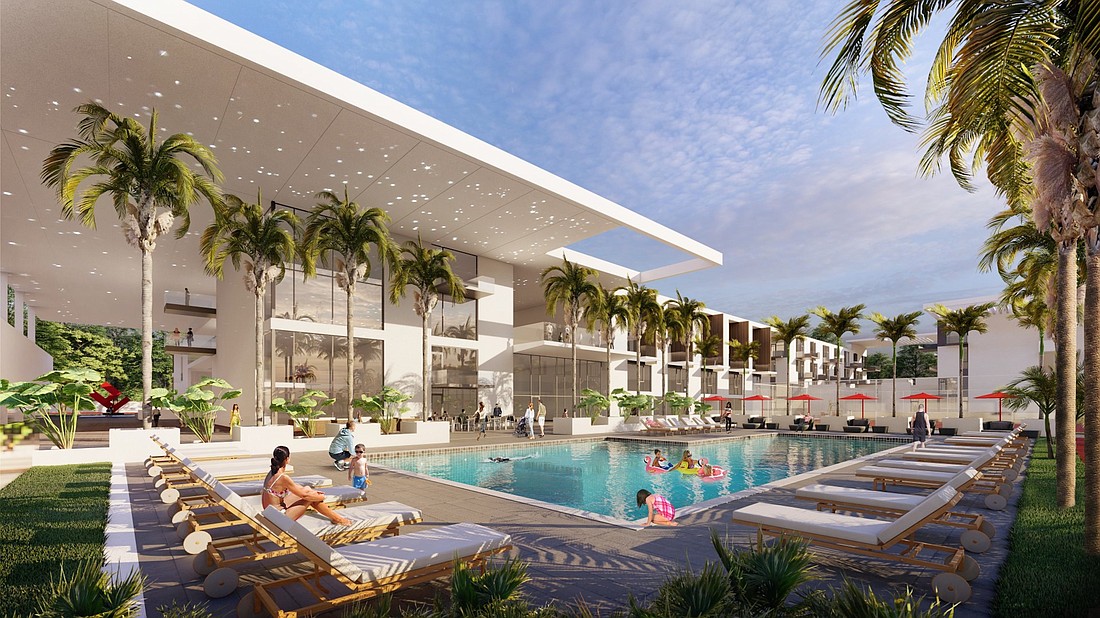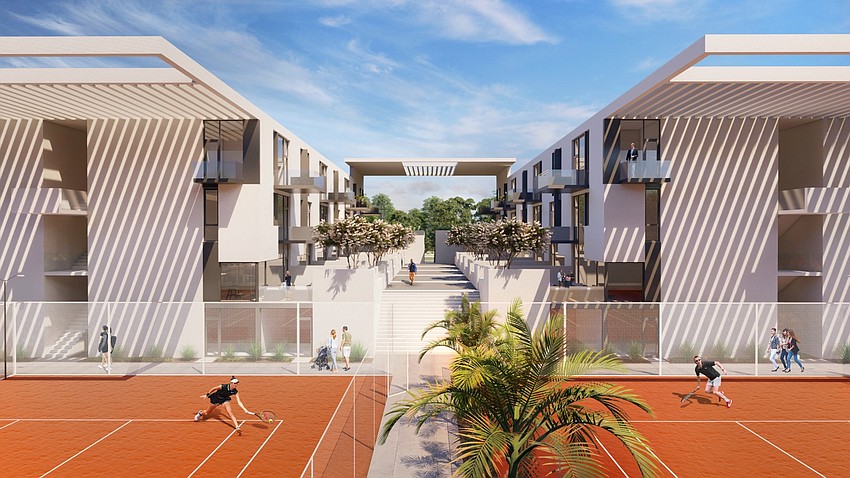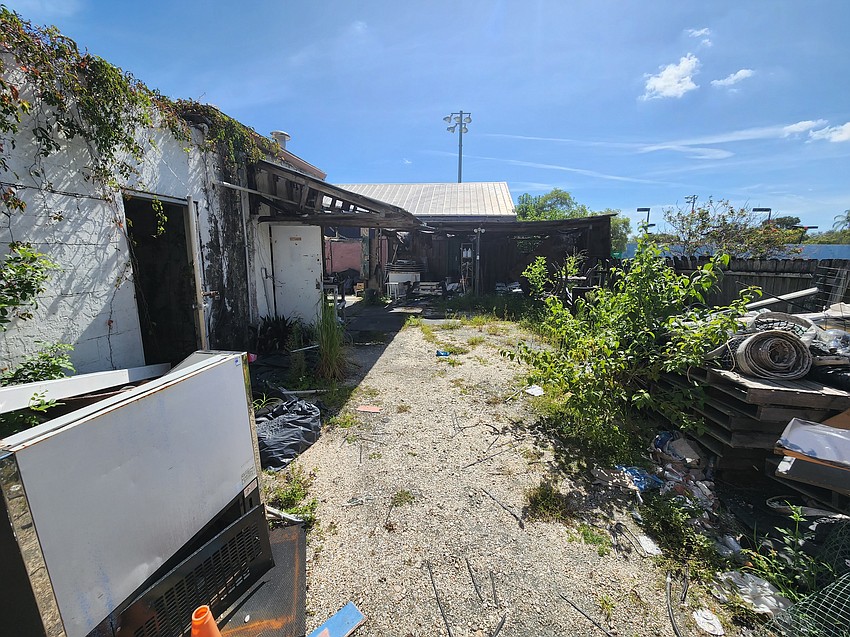- July 26, 2024
-
-
Loading

Loading

Redevelopment of Sarasota’s Bath & Racquet Club into a multi-use residential and recreational project hasn’t cleared the net just yet.
The combination condominium, commercial and private tennis and pickleball club is now the subject of legal volleying as a number of residences surrounding the site have filed for a writ of certiorari, seeking judicial review and a reversal of minor conditional use and site plan approval of the project.
On Feb. 8, the complaint was filed in the 12th Judicial Circuit Court, challenging the project’s approval. The petitioners cite a number of alleged irregularities and inconsistencies with the zoning code, and that their appeal was never heard by the City Commission because their aggrieved persons status was improperly dismissed.
In Florida state courts, a writ of certiorari refers to a proceeding in which a party asks a district court of appeal to review a decision of a trial court. Because the Bath & Racquet approval occurred in a quasi-judicial process, the city is effectively the trial court in question.
The petitioners filed the complaint with the 12th Circuit Court on Feb. 8. The city attorney’s office received the order to show cause from the court on Feb. 15, giving it until March 17 to respond to the petition. Once it does, the petitioners will have 20 days to file a reply.
The complaint also names Bath & Racquet Club developer Sarasota Springs LLC as a respondent.
In November 2022, the Planning Board by a 3-2 vote gave final approval to Bath & Racquet, a plan that includes 256 condominiums and 65,448 square feet of office and retail space in addition to restoration of the venerable tennis club with 16 tennis and 16 pickleball courts, plus pool and fitness facilities. In July 2021, the City Commission approved rezoning of the site to facilitate the project.
The Planning Board’s final approval was appealed to the City Commission, which on Jan. 9 declined to take up the appeal, ruling by a 4-1 vote — with Jen Ahearn-Koch opposed — that the surrounding residents failed to meet the standards of aggrieved persons, which is required to allow the action to proceed.

An aggrieved party is defined as any whose personal, property or financial interests or rights are negatively impacted by another's action or by a statute, judgment or order. An aggrieved party is entitled to challenge a decision or action legally in court.
All of the 19 petitioners reside on either on Mill Terrace, which runs alongside the southern boundary of the site, or Riverview Court, which ends in a cul-de-sac abutting the western side.
“This is a challenge to quasi-judicial application for minor conditional use and site plan approval that is properly brought by petition for writ of certiorari,” the complaint reads. “The minor conditional use and site plan should have been denied for failing to meet the requirements of the City of Sarasota code.”
The complaint challenges the determination that the appeal was not heard by the City Commission because the parties lacked standing.
In addition, petitioners site:
The complaint states a failure to provide parking spaces to meet the minimum requirements of the parking code. It alleges 746 total parking spaces are required by code, but only 507 are provided.
In addition, it alleges the site plan cannot be approved because the city’s Development Review Committee sign-off on the project was not complete, specifically a failure of the site plan to show sufficient lighting and drainage information.

The Bath & Racquet Club has been closed since 2020. Tucked behind Trader Joe’s off U.S. 41 on Robinhood Street, the property was acquired by Sarasota Springs LLC in January 2022 for $15.35 million with the intention to build the plan conceived for prior owner Mark Lucas by the Sarasota architecture firm Halflants + Pichette.
Should the project move forward as planned, condos will be offered in 84 one-, 112 two- and 51 three-bedroom models ranging from 700 to 2,200 square feet. Of the one-bedroom units, 15% will be reserved as attainable housing. They will include the same floor plans and finishes as the market rate units, and will be scattered throughout the community. A percentage of the condos will be held by the developer as rentals and may be sold individually at a later date.
Built in 1969, the club had 29 courts when it closed, in addition to several racquetball courts and a swimming pool.